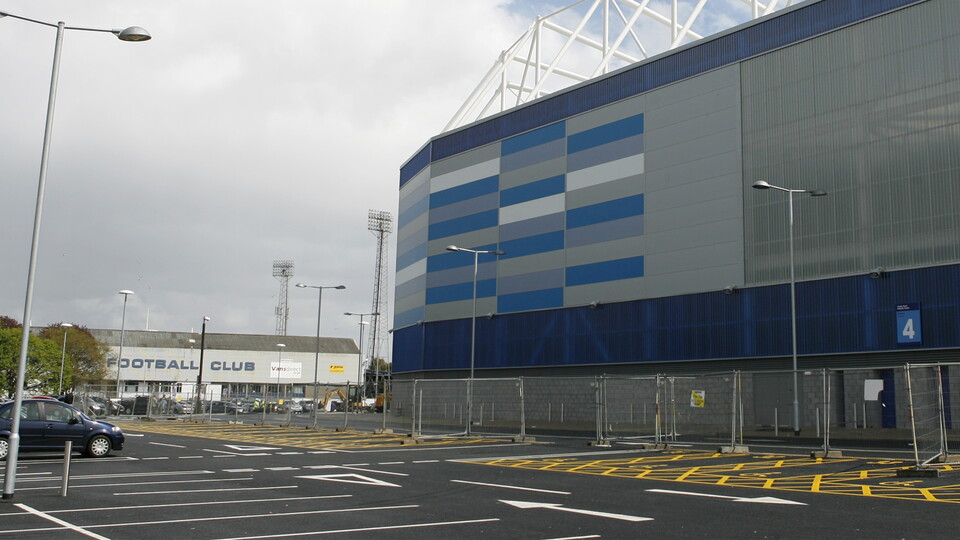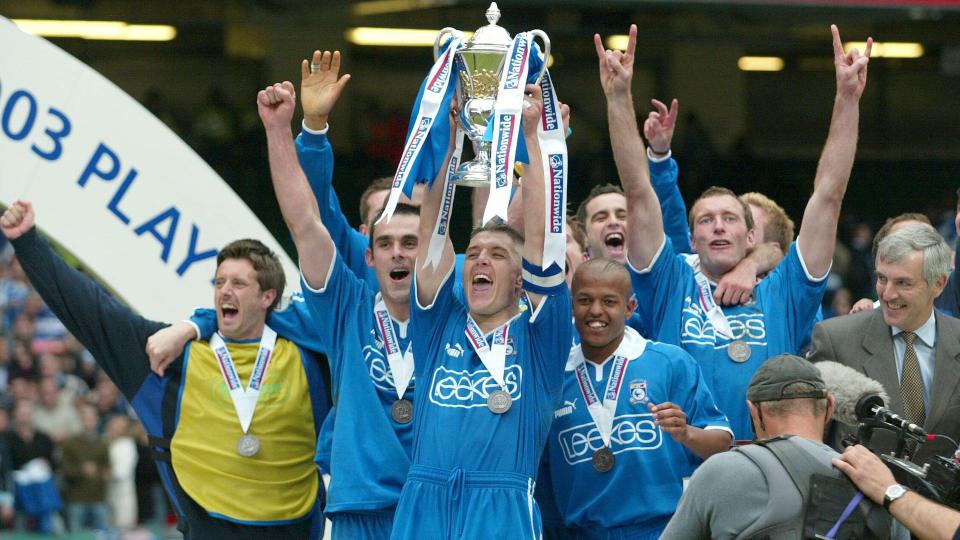During each month throughout this season, we will be remembering the most important moments, matches and milestones from the history of Cardiff City Football Club, proudly celebrating our momentous 125th anniversary.
The turn of the 21st century was an optimistic time in the capital city of Wales. Frank Burrows had led the Bluebirds to promotion in 1998/99 during his second spell in charge of the Club. A goalless draw with Scunthorpe United on 1st May, 1999, had confirmed City’s rise back into the third tier, the first glimmer of hope that after two decades of difficulty, the good times may just be returning to Ninian Park.
Sadly, as had been the case after previous promotions, City struggled in Division Two during the 1999/00 campaign. Burrows saw in the new millennium as Bluebirds boss, but would soon resign his position, to be replaced by his assistant, Billy Ayre. Burrows had enjoyed two popular stints in the Ninian Park dugout, and is the only City boss to have twice won promotion in two different periods managing the Club.
Ayre could not prevent City from suffering an immediate relegation back to the fourth tier, with his side dropping back into the danger zone in the final weeks of the campaign. Despite this, the Ninian faithful were buoyed by the emergence of several young talents, including James Collins, Danny Gabbidon and Robert Earnshaw, all of whom were given their first tastes of regular senior football during the following 2000/01 season.
The Bluebirds bounced back in style that year, winning promotion again and leaving the fourth tier behind for good. The Club had three managers during the promotion-winning campaign – briefly Ayre, then Bobby Gould and finally Alan Cork, and with new investment City were able to make an immediate return to the Second Division. The team gelled under Cork from October onwards, with Earnshaw the star of the campaign, netting 19 goals in the league and a further six in Cup competitions. The Zambian-born striker had made his City debut back in 1997, but had been made to wait for his chance as a regular starter.
Whilst Earnshaw was running riot, it was his strike partner who would seal promotion. Another popular figure with the Bob Bank crowd, Leo Fortune-West scored a hat-trick in late April 2001 to earn a 3-3 draw with York City, the game which sent the Bluebirds up. The classic ‘little and large’ strike partnership netted 38 goals between them that season, with the likes of Andy Legg, Jason Bowen and Scott Young (more on him later) forming the basis of a squad that would go on to achieve even more in the following years.
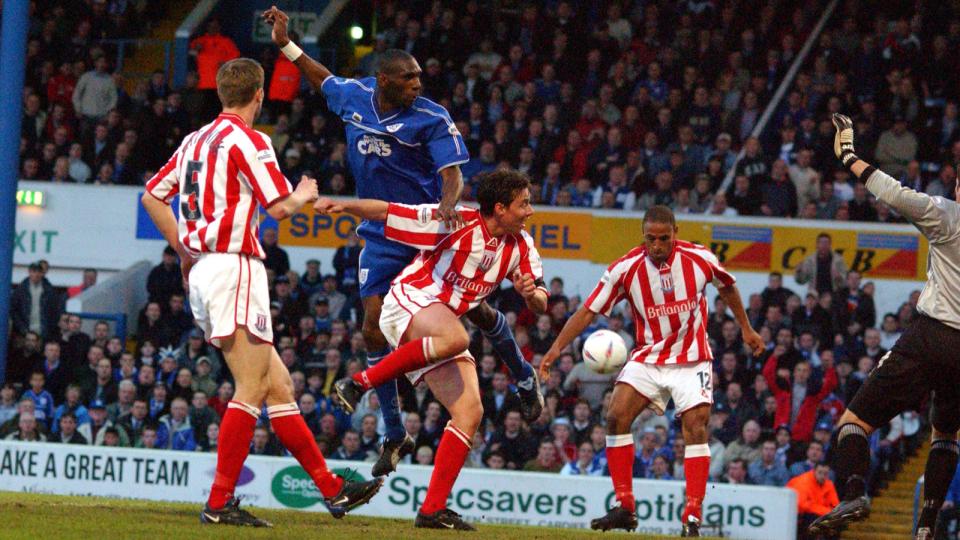
Rather than fighting relegation immediately after being promotion, as had been the case in several previous seasons, City would finish the 2001/02 season in fourth position. Cork led the Bluebirds into the Play-Off positions for a brief period in December, but his side soon dipped back into mid-table. Then came one of the most famous nights in Ninian Park history, perhaps the last truly great game at our famous old ground. Leeds United were in town, sitting atop the Premier League table with a side full of stars. The Sky Sports cameras, and the 22,009 in attendance, watched on as John Charles, a hero of both clubs, led the sides out onto the turf. Soon enough, Mark Viduka put Leeds ahead with a fierce strike.
But the lead didn’t last long, as one of our 2001 summer recruits solidified his place as a fan favourite. Graham Kavanagh had cost a reported Club record fee of £1million from Stoke City, and was having a sterling first season in South Wales. He would score 15 goals from midfield during that debut campaign, and the pick of the bunch was a postage-stamp free-kick to draw level against the Whites. With the score at 1-1, and Leeds’ Alan Smith being sent off for elbowing Legg just before half time, the City faithful could smell an upset.
Scott Young would write his name into Bluebirds folklore in the 87th minute. Fortune-West won the initial header from Kavanagh’s corner, with the ball falling into the path of local lad Young. He made no mistake, lashing into the net to send the home fans wild and dump Leeds out of the competition. It was one of the biggest Cup upsets of all time, and one of only four times that the Premier League leaders had been knocked out by lower-league opponents (Plymouth Argyle repeated the feat against Liverpool earlier this season).
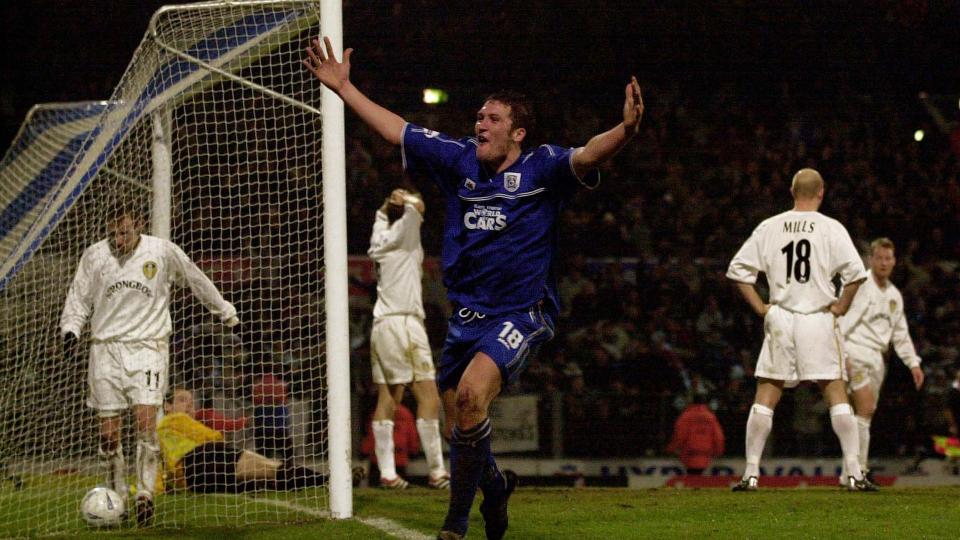
Despite that Cup triumph, Cork’s tenure as Bluebirds boss would not last, with Lennie Lawrence named as his replacement in February. The former Middlesbrough boss oversaw a remarkable resurgence, as City went 13 games unbeaten to sneak into the Play-Off places. Now aiming for consecutive promotions, Lawrence’s side were unlucky to fall to defeat against Stoke City, the side from whom the Bluebirds had purchased Kavanagh and later Peter Thorne, breaking our transfer record twice in the same summer. Strike duo Earnshaw and Fortune-West scored in a 2-1 first leg victory, only for the Potters to hit back at Ninian, winning 2-0 and eventually going up.
2002/03 was a special season in South Wales. Lawrence’s side were in the promotion picture for the entire campaign – their lowest position all year was 8th, for a brief week in September. A poor end to the term saw the Bluebirds miss out on automatic promotion, dropping to 6th place. Earnshaw had once again enjoyed a fantastic scoring season; he broke two records; his 31 league strikes beat Stan Richards’ effort of 30, a record that had stood for 56 years, whilst Earnie’s overall tally of 35 goals saw him break Hughie Ferguson’s record of 32, set way back in our FA Cup Final-winning year of 1926/27.
Having fallen at the Play-Off hurdle the year prior, City were determined not to make the same mistake again, and a mouthwatering Severnside derby double-header awaited. Thorne was the scorer of the only goal of the tie. He headed home in a 1-0 Ninian win in front of 19,000, giving the Bluebirds a huge boost ahead of the short trip to Ashton Gate. There, a heroic display saw City progress to the Play-Off Final, with Neil Alexander producing a fine performance to secure a clean sheet with a goalless draw. All of a sudden, the Bluebirds had a shot at the second tier.
25th May 2003 remains one of the most memorable days for many City fans. With Wembley being redeveloped, 66,000 supporters flocked to the Millennium Stadium in the heart of our capital city, with Queens Park Rangers the opponents. The big occasion may have added to the nerves, with few clear cut chances occuring in 90 minutes, but the game began to open up in extra time, and something had to give. Lawrence made the pivotal change, replacing the prolific Earnshaw with Andy Campbell, who, like Scott Young a year earlier, wrote his name into the history books. Gareth Whalley sent a lofted pass forward for Campbell to chase; the striker judged the bouncing ball perfectly and lobbed Chris Day to send Cardiff City back to the second tier after 18 years away.
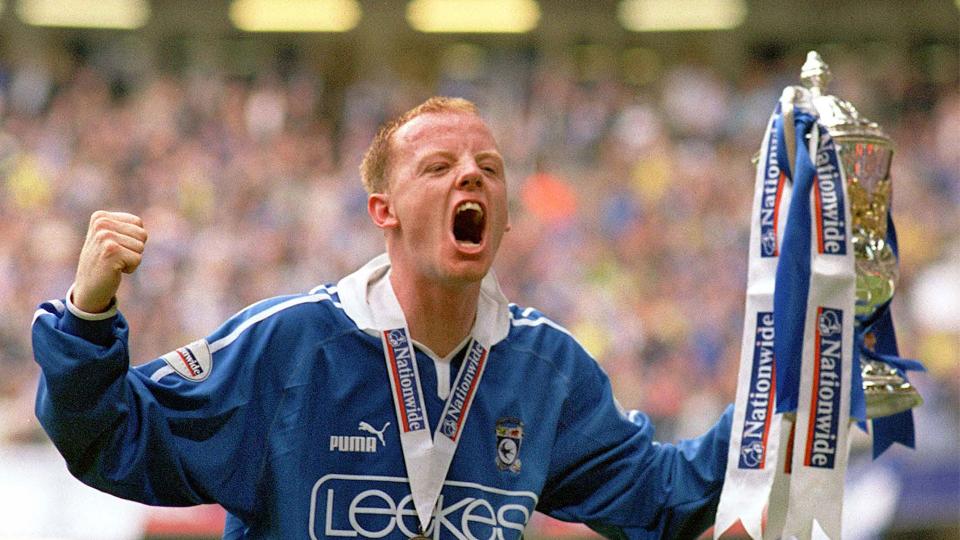
The future was looking bright for the Bluebirds, especially with news that plans for a new stadium had been approved by Cardiff Council. Unanimous approval was given in August 2003, followed by the Welsh Assembly in September. With the Club back in the second tier, soon to be renamed as the Championship, and a new stadium on the way, things were certainly on the up. Having secured two promotions in three years, the aim was now to reach the Premier League.
However, with money tight after years of big spending, the team underwent a transition, with the likes of Gabbidon, Collins, Kavanagh and Earnshaw departing for pastures new. Thankfully, the next generation of young talent was just around the corner, spearheaded by Joe Ledley, who would make his City debut in 2004. The first few years in the second tier saw the Bluebirds consolidate their place as a Championship side, with 13th and 16th place finishes. Lawrence departed at the end of 2004/05 after a very successful two-and-a-half-year spell at Ninian Park.
Dave Jones was appointed as his replacement in the summer of 2005, bringing the likes of Darren Purse and Jason Koumas into the Club. The loan arrival of Koumas was a triumph, with the playmaker scoring 13 goals to win the Player of the Season Award. With Ledley, Paul Parry and young forward Cameron Jerome also impressing, the Bluebirds could now seriously look towards the top end of the Championship table, and push for another promotion.
The summer of 2006 was a key period in our recent history. Several players arrived in South Wales who would go on to have defining spells with the Club – Kevin McNaughton, Stephen McPhail, Roger Johnson and Michael Chopra in particular. Fuelled by the goals of Chopra, City started the season in superb form, topping the table in the early weeks. The arrival of Peter Whittingham in January 2007 and the emergence of young talent Aaron Ramsey in the final weeks of the campaign left all connected with the Club excited for the coming years, despite an eventual 13th place finish.

By this time, City had not reached the Fifth Round of the FA Cup since that famous win over Manchester City in 1993/94, and hadn’t played a Quarter Final tie since 1927. With another mid-table league finish, the 2007/08 season was made memorable by the Bluebirds’ exploits in the Cup, going all the way to the Final for the third time in our history.
Most neutrals hoped that City would go out of the tournament at the first attempt, as we travelled to Chasetown of the British Gas Business Southern League Division One Midlands, with a banana skin very much on the cards. After our hosts took the lead, Ramsey’s first goal for the Club helped turn the tie into an eventual 3-1 win. McNaughton scored a thunderous volley in the next round, a 2-0 away win over Hereford United, before excellent goals from Whittingham (who was beginning to show glimpses of his sublime talent) and Jimmy Floyd Hasselbaink secured a 2-0 home victory over Wolverhampton Wanderers. Suddenly, the Bluebirds were a game away from Wembley.
Gareth Southgate was Middlesbrough manager when City travelled to the Riverside for our last-eight tie, with most expecting Premier League Boro to coast through. However, an inspired display from Jones’ men put City into the semis, with a wonderful individual effort from Whitts followed by a diving header from Johnson – the Bluebirds were 2-0 up, and Boro couldn’t find a way back in. FA Cup fever had gripped the capital, with an all-Championship clash against Barnsley up next.
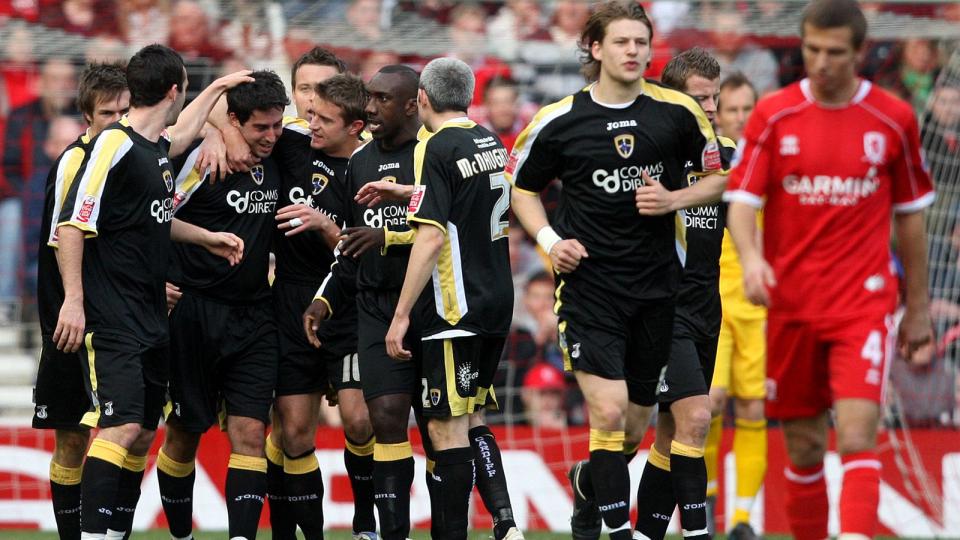
The Tykes had also been on an impressive Cup run, dispatching Liverpool and Chelsea to reach the final four, but they were no match for City. Hometown hero Ledley scored a dipping volley after nine minutes, sending the black-and-yellow half of Wembley wild. Spirited defending saw the Bluebirds go through to the FA Cup Final, our first since the famous win of 1927.
89,874 fans packed into Wembley for the showpiece event, which remains the stadium’s highest attendance for a football fixture. Although Portsmouth would narrowly succeed on the day, the heroic journey that the second tier Bluebirds had embarked on captured the attention of millions, and added further weight behind the Club’s push for promotion.
By now, the development of our new stadium was well underway, meaning that 2008/09 would be our final season at Ninian Park. The famous old ground had seen it all; from that very first game against Aston Villa in 1910 to the heights of the top flight in the 20’s and 50’s, famous European nights and crazy Cup clashes. There were to be more memorable moments in that final season – Eddie Johnson was cheered on by thousands as he broke his duck for the Club, the returning Chopra and Ross McCormack scored in a wild 2-2 South Wales derby draw, the first league clash between the two rivals at Ninian Park in 20 years, and a final victory, 4-1 against Derby County, under those iconic floodlights.
A huge chapter of Cardiff City history would end there, but an exciting new one was just about to begin. The Bluebirds made the short journey across Sloper Road to the brand-new Cardiff City Stadium, starting the modern era in a very healthy position.
